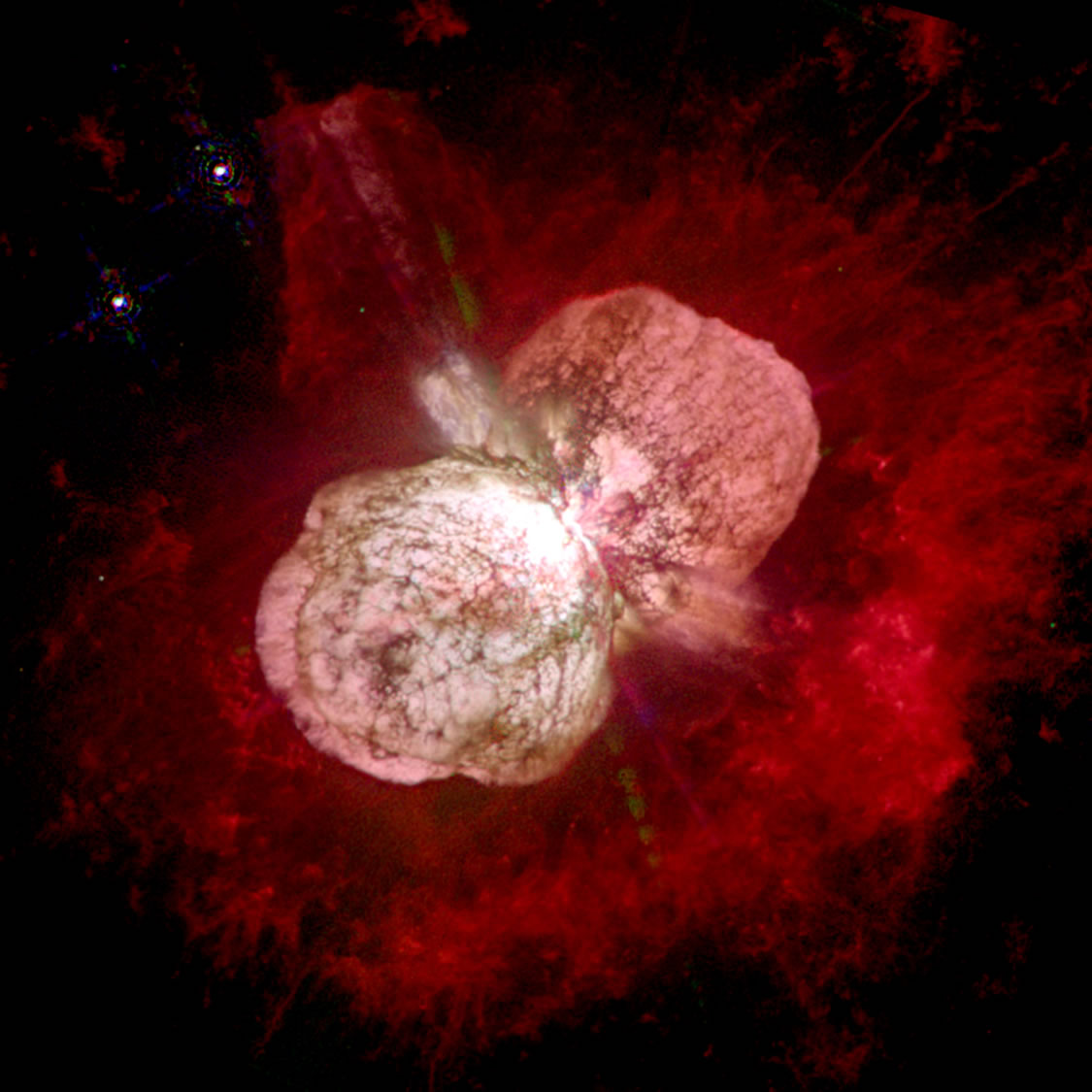
(It hasn't yet, it's just getting ready. But anytime tomorrow or in 10,000 years).
Posted on 05/16/2008 12:49:36 AM PDT by neverdem
bump
bkmark/thanks
A Medical Mystery: Artificial Hips that Squeak
FReepmail me if you want on or off my health and science ping list.
“produce the heavy elements—including oxygen and carbon”
Oxygen is a “heavy element”?
http://www.astrophysicsspectator.com/topics/stars/FusionHydrogen.html
Compared to hydrogen and helium, I guess so. I didn't write it. The images are interesting.
Sorry. Try this one instead:

It should have been 'heavier' elements. Oxygen is only #8 in the periodic table. On the other hand, compared to hydrogen and helium it's pretty heavy.
With a 25,000 light year distance, that 'puppy' may have
already mailed its candygram 25 millenia ago (postage was reportedly much cheaper then).
The Milky Way is a perfectly ordinary spiral galaxy, except for a shortage of supernova activity.
-—<>-—<>-—<>-—<>-—<>-—
I don’t think I ever heard this before. Worth mulling over in a philosophical and religious sense, as well as a scientific sense, if this is accurate.
In the science of star processes, at times even Helium is considered “heavy”, but more typically the “light” elements are Hydrogen, Helium, Lithium, and Beryllium. Everything else is typically considered “heavy”, but Oxygen is definitely, always, considered “heavy” in a star.
Simple star fusion processes will result in a release of energy up to the element Iron, but since there are so few atoms of anything other than Hydrogen or Helium, the chances of them coming into sufficient proximity is extremely small, so for most of the life of a star, very little heavy atom building occurs.
When elements heavier than Iron are built, it takes energy OUT of the system, instead of releasing it. That process almost never occurs in a normal star, but only in supernova events.
I probably should have added, that although Beryllium and Lithium are usually considered “light” in star processes, they are very rare in a star due to not being very stable, so they don’t last long enough to take part in any further reactions. Carbon is the smallest stable nucleus other than H or He for stellar processes. This renders the usage of the term “light” to effectively mean H or He.
The Cycle of Cosmic Catastrophes:
Flood, Fire, and Famine
in the History of Civilization
by Richard Firestone,
Allen West, and
Simon Warwick-Smith
 |
||
| · join · view topics · view or post blog · bookmark · post new topic · | ||
L
LOL good one. Yes it is like a “dawn explosion”.
Disclaimer: Opinions posted on Free Republic are those of the individual posters and do not necessarily represent the opinion of Free Republic or its management. All materials posted herein are protected by copyright law and the exemption for fair use of copyrighted works.